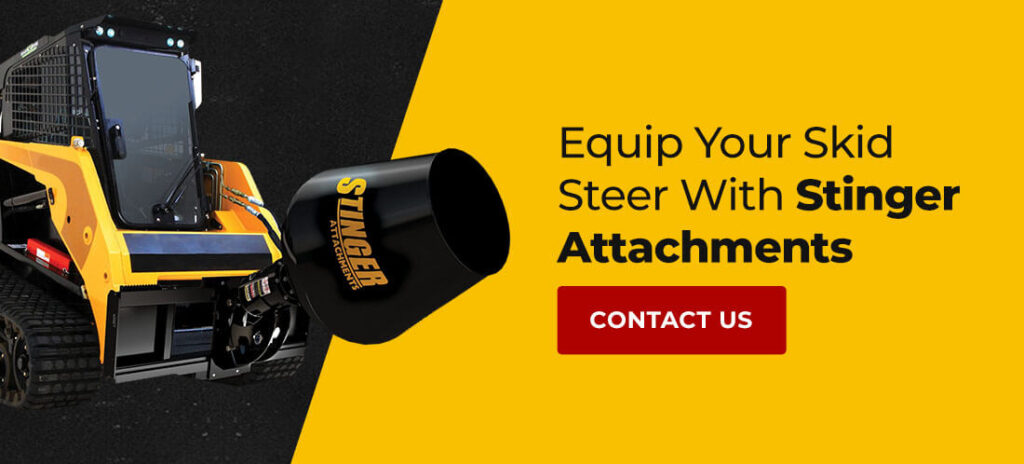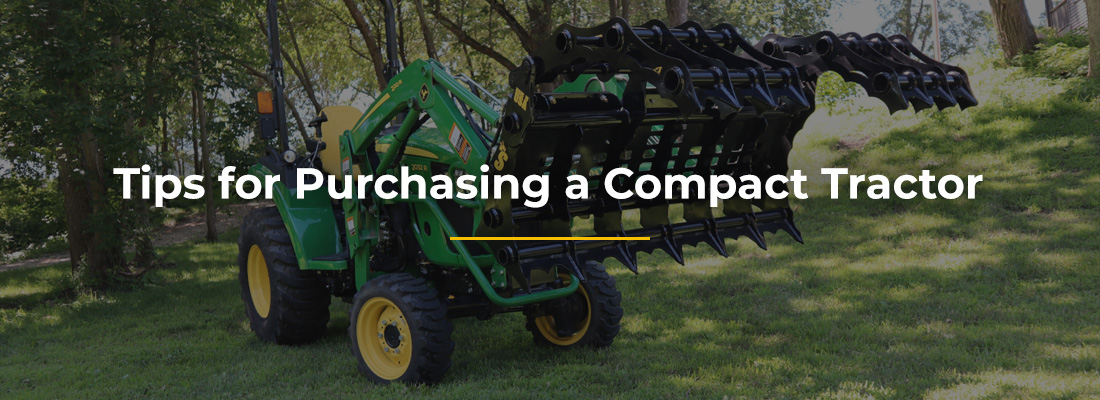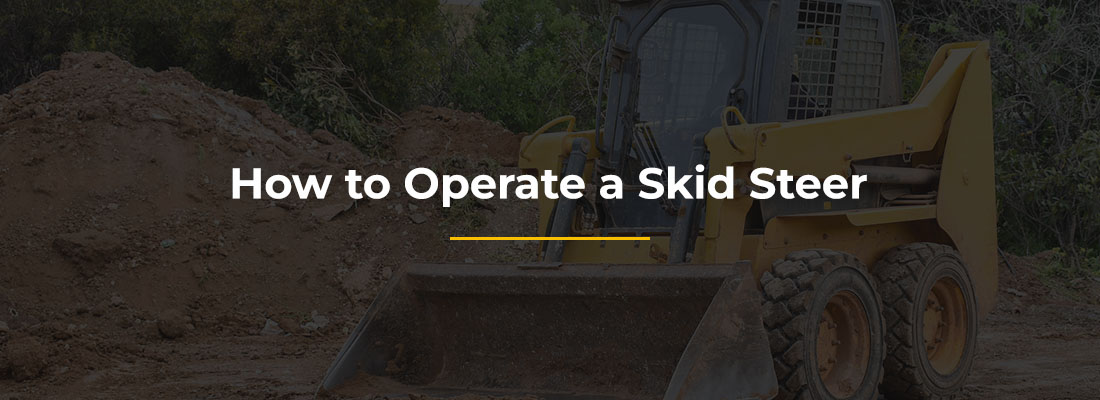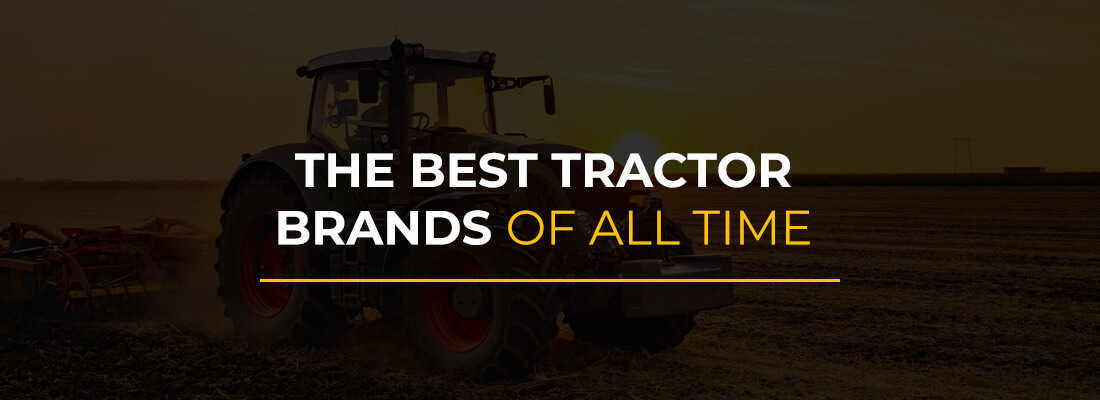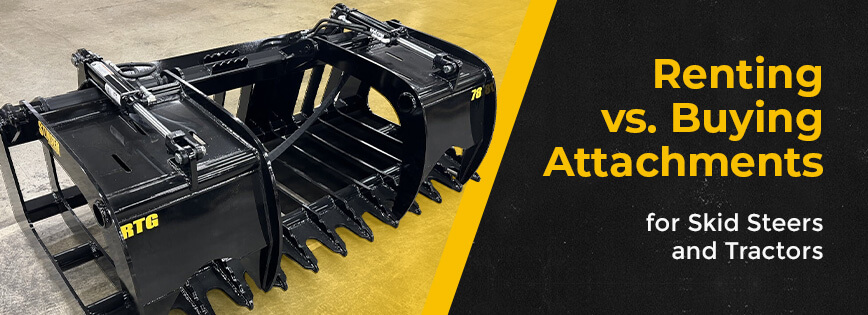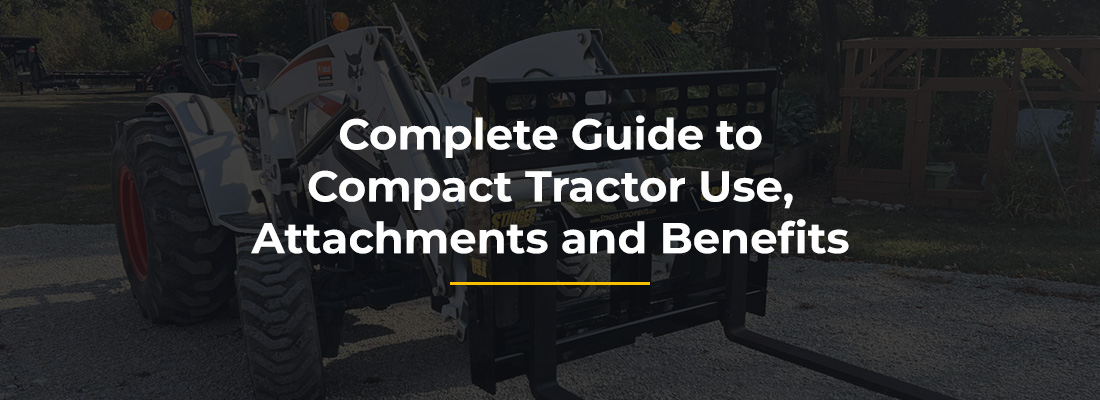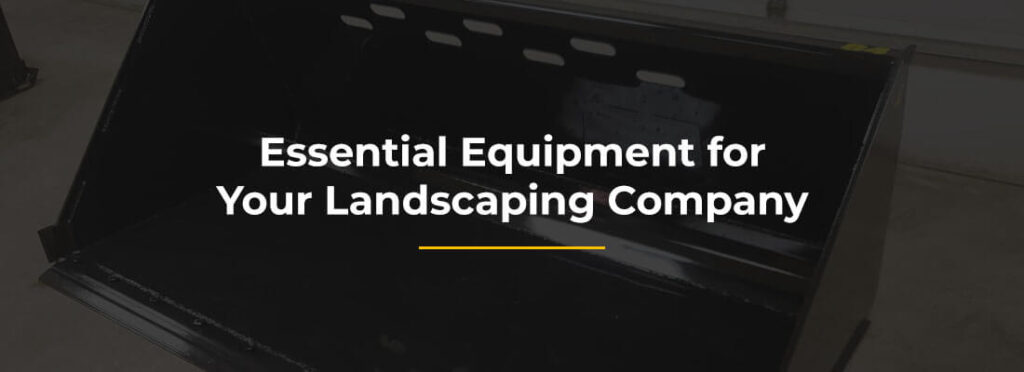
Essential Equipment for Your Landscaping Company
Landscapers take on various jobs and projects, from mowing yards and clearing debris to removing trees and trimming branches. Some landscaping companies specialize in certain areas, while others do a bit of everything. Regardless of your jobs or the services you offer, you need a few essential tools and equipment to do the job well. As a landscaper, your equipment is the lifeblood of your business. You need quality, powerful tools to work efficiently and effectively.
Learn about the various tools landscapers use and which tools you may need to invest in for your business.
Hand Tools for Starting a Landscaping Business
When building or expanding your landscaping business, you may immediately turn to power tools or heavy-duty machines. While these should certainly have their place in your lineup, it’s best to start with the basics. Hand tools are essential pieces of equipment to have when operating a landscaping business.
Depending on your landscaping company’s scope and size, you may rely heavily on hand tools or use some less often. Regardless, hand tools will come in handy at some point, so you should keep them on hand.
Some standard hand tools you should consider having available include:
- Shovels: Shovels vary in design and use, though round point and spade head shovels are most common for landscapers. These types of shovels are primarily used for digging and cutting through dirt and other materials. You may also use a shovel to scoop and move small amounts of material. Shovels with aluminum heads are typically lightweight and durable, making them well-suited for various landscaping needs.
- Rakes: A rake is useful for moving and leveling materials. Many landscapers use two types of rakes — leaf rakes and steel rakes. Leaf rakes are used to move and collect lightweight debris like leaves and sticks. Steel rakes are more heavy-duty, typically used to move gravel, mulch or soil.
- Lawn bags and buckets: Whether you’re collecting lawn clippings or hauling materials around a job site, lawn bags and buckets are essential tools for landscaping. Though these tools may be easily overlooked, they’re extremely helpful for hauling materials and disposing of debris. You could load lawn bags with grass clippings, twigs or leaf piles for easy removal and disposal. Plastic buckets are most effective for landscapers — they won’t corrode when exposed to moisture.
- Shears: Hand shears are used to prune hedges, bushes, trees and other plants. They remove branches and leaves to achieve a manicured appearance or remove dead limbs. Hand shears are best suited for thinner branches. For thicker branches, you’ll likely need a power trimmer.
- Brooms: Push brooms are helpful to keep on hand for cleanups. Brooms are useful for clearing dirt, dust, grass, leaves or other debris from surrounding paved surfaces. You could use a broom to clear off a sidewalk, walkway, driveway or parking area after mowing around it. Brooms are ideal when you need to tidy up a bit before heading to your next job.
- Toolkit: While a standard toolkit won’t directly help you clean or maintain yards and properties, it’s something you should always keep nearby. At the very least, look for a kit that includes a hammer, adjustable wrench, screwdriver, bits and a utility knife. Landscaping equipment is built to withstand heavy use and applications, but you’ll want to be prepared in case something comes loose or needs a quick repair.
- PPE: Personal protective equipment (PPE) should be worn for every job you do. Gear like safety glasses, gloves, steel-toe boots and ear protection can keep you and your employees safe from flying debris and loud equipment. For example, working with hand tools for extended periods can be tough on your hands, often causing blisters. Wear a quality pair of gloves to help protect you from blisters and cuts.
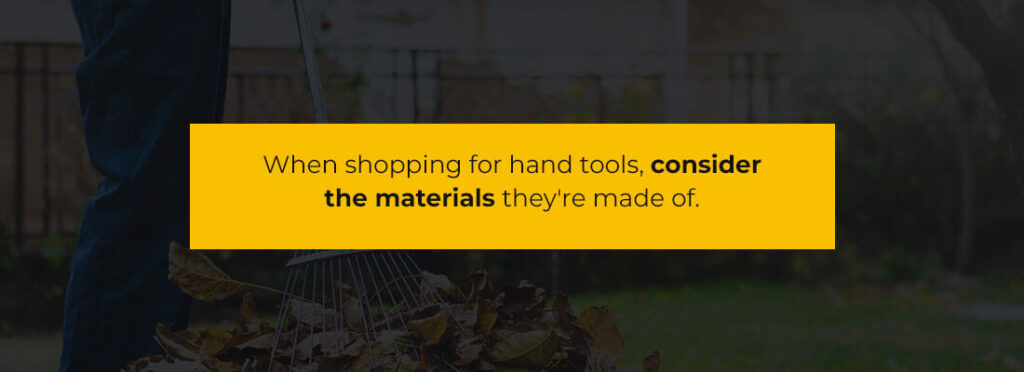
When shopping for hand tools, consider the materials they’re made of. Many hand tools have wooden handles because they’re affordable and durable. Fiberglass and steel handles are also common because they offer longevity but at a higher price point. Consider the handle’s comfort and how heavy it is, as these factors will affect how the tool feels during use. If you can, test the equipment before buying it to know how it feels to use the tool and whether it’s something you could use for several hours a day.
Landscaping Power Tools
Power tools are some of the most common landscaping equipment. These tools are often used for tougher, more intensive jobs. They can also save you significant time because they complete jobs quicker than hand tools. Many landscapers prefer power tools over hand tools because of their convenience and extra power.
Typically gas- or electric-powered, these tools offer more power for less strenuous work. Gas-powered tools provide more power, though electric tools typically run quieter. Most electric tools run on a rechargeable battery, so they’ll run effectively on a full charge and become less capable as the battery dies.
When it comes to purchasing power tools, opt for high-quality equipment. While you should keep your budget in mind, think of high-quality power tools as an investment. Typically, the most reliable power tools cost a bit more, but they’re more likely to last longer. This is important to consider as a landscaping business owner.
While many power tools exist, here are a few power equipment options you may want for your landscaping company.
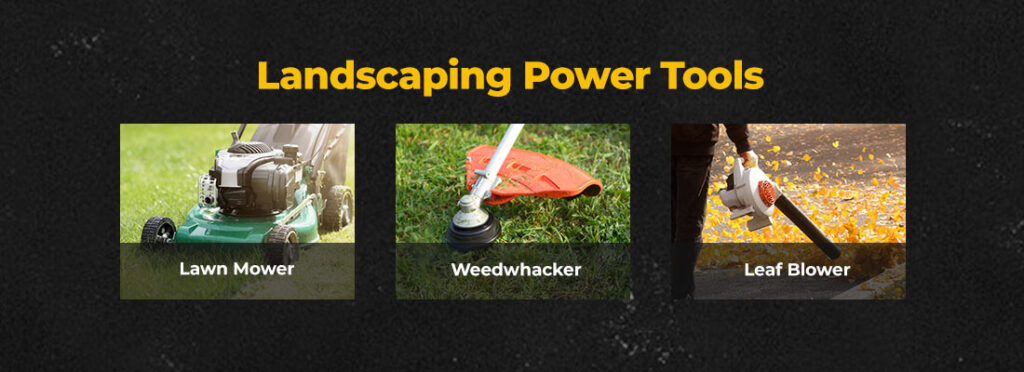
Lawn Mower
Lawn mowers are a staple for most landscaping companies. Mowers are often one of the first power tools landscapers have since mowing is one of the most common services landscapers offer. Mowers can vary significantly, ranging from push mowers to zero-turn mowers:
- Push mowers are what the average person may imagine when thinking of a lawn mower. They require the user to push the mower manually across the grass. Push mowers are typically the most affordable option, but the operator’s strength ultimately drives the mower. These mowers are most effective for smaller properties or landscapers just starting out.
- Self-propelled mowers are similar in that the user must walk behind them to steer, though these have a transmission that gets rid of the burden of physically pushing the mower. Self-propelled mowers have a higher price point, though they’re more effective for larger mowing jobs. They require less physical effort, enabling you to maneuver uneven surfaces easily. You can also adjust the speed to accommodate your walking pace and efficiency.
- Riding lawn mowers are the next step up. The operator sits atop the mower and uses the steering wheel and brakes to operate it like a car. Standard riding mowers are often called lawn tractors, as they offer many capabilities and can accommodate a few accessories, like sweepers or baggers. Zero-turn mowers are a popular type of riding mower for landscapers who offer a lot of lawn care services. They’re controlled with levers and have a turning radius of zero, allowing for tight turns and efficient mowing.
Weedwhacker
Weedwhackers, sometimes called weed eaters or string trimmers, are often used to make up for what lawn mowers can’t do. Most mowers can only get so close to fence poles, trees, flower beds, mailboxes, buildings and other objects around a yard. Weedwhackers allow landscapers to trim the grass or weeds in hard-to-reach places. These tools are also often used to create a distinct edge along sidewalks or other areas.
Weedwhackers use microfilament string to cut grass and weeds. The trimmer head dispenses the string and rapidly spins it so it stiffens and whips through plant life. As the strings wear out, they’ll need to be replaced either manually or the trimmer will dispense more from a spool kept inside.
The head is connected to a long shaft, and the controls and motor are at the opposite end. The operator holds the weedwhacker near the motor end and the shaft is long enough to prevent the user from having to bend over. Typically, you’ll pull a trigger to control the throttle and spin the trimmer head.
Leaf Blower
Leaf blowers are a must-have for commercial landscapers. Leaf blowers aggressively blow air out of a long nozzle which can be pointed in different directions to control where the air is blown. Landscapers use blowers to efficiently and effectively clear yards, sidewalks, patios, driveways, garden beds and other areas of debris like leaves, grass clippings or sticks.
Hand-held blowers are extremely common for the average homeowner to have, as they cost less and are perfect for small areas. A hand-held model may suffice if you’re landscaping smaller areas or only need it to touch up. However, most landscapers require more convenience, especially for larger properties and jobs. Backpack blowers are ideal for commercial landscaping because you can wear them on your back, preventing strain on your wrist and arm.
Commercial Landscaping Equipment List
The type of landscaping equipment you need for your company likely depends on the size of your business and the scope of the services you offer. If you’re working on large properties and projects, you may need heavy-duty machines.
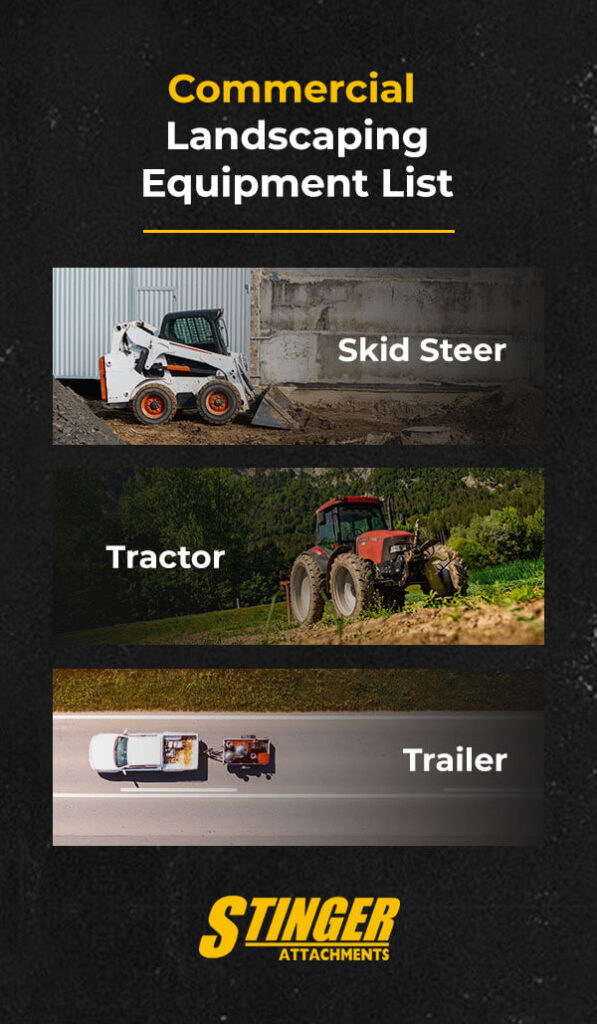
Skid Steer
Skid steers have many applications and uses, including construction, land clearing and landscaping. These machines are compact yet extremely powerful, moving and hauling heavy loads of material.
Skid steers move on synchronized wheels, so the left and right wheels move independently from each other. This characteristic makes a skid steer more maneuverable than other machines because it makes zero-radius turns, moving in a skidding motion. You can also find tracked versions that traverse soft ground easily. Skid steers can move through narrow or awkward spaces more easily than larger machines.
Skid steers are typically outfitted with a bucket for digging and hauling materials. While you can get many uses out of a simple bucket attachment, one of the benefits of having a skid steer is the ability to change the attachment. Skid steer attachments allow you to perform numerous tasks with one machine. Here are a few skid steer attachments you may use for a landscaping business:
- Snow equipment: A skid steer with a snow bucket or pusher attachment is the perfect way to add snow removal services to your company’s offerings, especially if you operate in a climate that gets hit heavily with snow. Whether clearing driveways or parking lots, skid steer snow equipment allows you to get the job done efficiently.
- Tree puller: As a landscaper, you may need a powerful tool to help you pull trees, fence posts, stumps, shrubs, debris and more from the ground. A tree puller attachment for your skid steer makes the job easier than trying to dig things out with a shovel.
- Soil conditioner: Some landscaping projects may require preparing the ground for new seed or turf. Equip your skid steer with a soil conditioner attachment to rake, level and aerate the soil for its next use.
Tractor
Tractors are another machine landscapers can use for additional power and strength. While they’re most common for farming applications, tractors range in size and uses, making them an effective choice for commercial landscaping companies. Tractors have large rear wheels for optimal traction and typically operate with four-wheel drive. Like skid steers, tractors can connect to attachments. However, tractors can hook up attachments to their fronts, rears and sides, giving you more options and angles to work from.
You can often equip tractors with the same attachments as skid steers, typically on a different scale. Tractors are larger than skid steers, though they are often more cost-effective to purchase and maintain. These machines are also relatively lightweight, helping you avoid disturbing the ground you’re working on. You can choose from several sizes and types of tractors, but landscapers typically opt for compact tractors and attachments.
Trailer
As you consider heavy-duty landscaping equipment like skid steers, tractors or larger riding mowers, you’ll also need to consider how you’ll transport these tools to your job sites. You can easily haul several power tools in the bed of a truck, though the more you have and the larger they are, the more you’ll need to consider getting a trailer for your landscaping business. A trailer is an essential piece of equipment for commercial landscapers — it’s one of the best ways to transport the rest of your equipment.
Suppose you choose a tractor or skid steer and various attachments for your landscaping company. In that case, you’ll need a large trailer to haul the machine and any attachments necessary for the job you’re completing.
Equip Your Skid Steer With Stinger Attachments
Whether you’re gearing up for the grand opening of your landscaping business or are looking for new equipment to expand your current offerings, skid steers and compact tractors are effective machines to landscape with. At Stinger Attachments, we understand you need quality, reliable equipment to provide efficient services for your clients. We provide a wide assortment of industrial-grade skid steer and tractor attachments for your heavy-duty landscaping needs.
Not sure which attachments would be best for your company? Contact our team and we’ll help you find the right tools.

